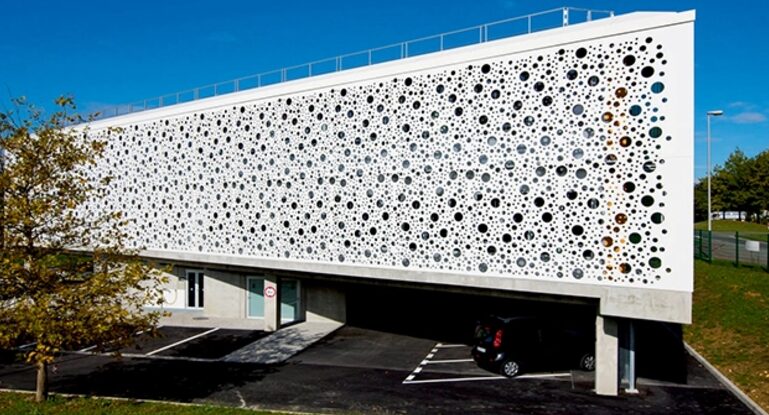Key Takeaways
- Metal products are integral to modern architectural designs due to their versatility and strength.
- Innovative metal applications can improve building sustainability and aesthetics.
- Architects and builders rely heavily on metals like steel and aluminum for structural and aesthetic purposes.
- Choosing the suitable metal involves considering durability, cost, and environmental impact.
Revolutionizing Modern Architecture with Metals
In today’s architectural landscape, metal is pivotal beyond primary structural components. It’s not just about beams and columns anymore. This ingenuity is visible in some of the most iconic structures around the world, seamlessly blending functionality with aesthetics.
From skyscrapers that reach dizzy heights to bridges that span vast stretches, metals provide the strength and flexibility necessary for these architectural feats. They can withstand harsh weather conditions while offering a range of styles, making them an indispensable component of modern construction. The combination of durability, adaptability, and aesthetic potential enables architects to transcend traditional design limitations and create functional and visually breathtaking structures.
Common Metals Used in Architecture
Today’s most frequently used metals in construction include steel, aluminum, and copper. Steel is revered for its incredible strength and resilience, making it ideal for foundation work and maintaining structural integrity. Aluminum stands out because of its lightweight nature and corrosion resistance, making it perfect for facade design and other aesthetic elements. To learn more, look at some of the most significant steel structures worldwide, which showcase the incredible potential of these materials in modern architecture. Architects are crafting imaginative designs, pushing the boundaries of traditional construction methods using various products from a metal supplier near me.
Additionally, copper is often valued for its unique appearance and natural patina that develops over time, providing buildings with an ornate and distinguished look. These metals are not only essential for the structural framework but also offer unique opportunities for decorative and functional architectural elements, which can significantly enhance a building’s visual and functional appeal.
Benefits of Using Metal in Construction
- Durability:Metals such as steel are renowned for their exceptional strength and ability to withstand extreme weather conditions, making them a trusted choice for large-scale projects. Their durability ensures a lengthy structure lifespan, reducing maintenance and repair costs.
- Versatility:Metals can be molded into various shapes and forms and quickly adapt to any design requirement. This versatility expands the creative possibilities for architects, allowing for innovative and avant-garde architectural expressions that can captivate and inspire.
- Sustainability:Many metals are recyclable, contributing to eco-friendly practices in the construction industry. By choosing recyclable materials, developers and builders can significantly reduce the overall environmental impact of construction projects, aligning with growing sustainability goals and eco-conscious initiatives worldwide.
Innovative Applications and Design Techniques
Metal application trends are constantly evolving, with architects and designers continuously finding innovative ways to incorporate metals into their projects. A notable trend is the use of corten steel for facades, which lends buildings a robust and rustic appearance. This unique weathered finish adds distinctive character and a sense of timelessness to developments, making it particularly appreciated in contemporary architectural designs.
Furthermore, the use of metal meshes for exteriors is becoming increasingly popular. These materials create visually striking facades that enhance aesthetic appeal and contribute to energy efficiency. They facilitate natural light diffusion, drastically improving indoor lighting conditions and reducing reliance on artificial lighting. This strategy effectively manages thermal performance, keeping buildings more relaxed in the summer and warmer in the winter, thus optimizing energy usage and contributing to sustainable architectural practices.
Challenges and Considerations
Despite their numerous benefits, metals also present specific challenges that architects and builders must carefully consider. The cost can be a significant factor, particularly regarding high-quality or specialty metals that require a more substantial upfront investment. This can impact budget considerations and necessitate a thorough cost-benefit analysis.
Additionally, the installation presents another challenge, demanding skilled labor and precise expertise to integrate the metals into the architectural framework correctly. In some regions, this specialized labor might be limited, posing potential delays in construction timelines. Planning for these eventualities and selecting materials and construction methods that align with available resources and expertise is essential.
The Role of Technology in Modern Metal Design
Technological advancements have revolutionized the way metals are used in architecture. Innovations in CAD modeling and 3D printing have empowered architects to visualize and create complex designs with unprecedented accuracy and precision. These cutting-edge tools enable the creation of intricate structures that were previously unimaginable. Discover how technology is shaping steel design and dramatically transforming architectural possibilities.
Such technological innovations improve the accuracy of metal fabrication and assembly and streamline the construction process. This reduces waste, fewer errors, and more efficient project completion times. Embracing these technologies allows architects and builders to achieve ambitious architectural visions while maintaining cost-effectiveness and quality standards.
Environmental Impact and Future Trends
As global environmental concerns escalate, the construction industry is turning to sustainable building practices, and metals have a crucial role to play in this shift. With their well-known recyclability, metals like aluminum and steel are pivotal in advancing green construction initiatives and reducing buildings’ carbon footprints.
The metal industry continues to innovate, and as new alloys and treatments emerge, the emphasis on eco-friendly solutions is expected to grow further. Future trends in metal application will likely focus on enhancing environmental performance with technologies that improve energy efficiency, reduce material waste, and strengthen the sustainability of building projects. As these advancements unfold, integrating sustainable metal applications will continue to bridge architectural beauty with environmental responsibility, leading to a more sustainable future for the construction industry.

